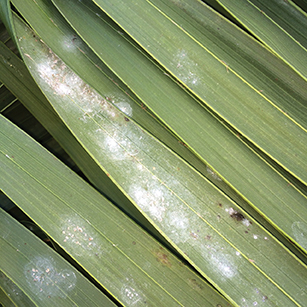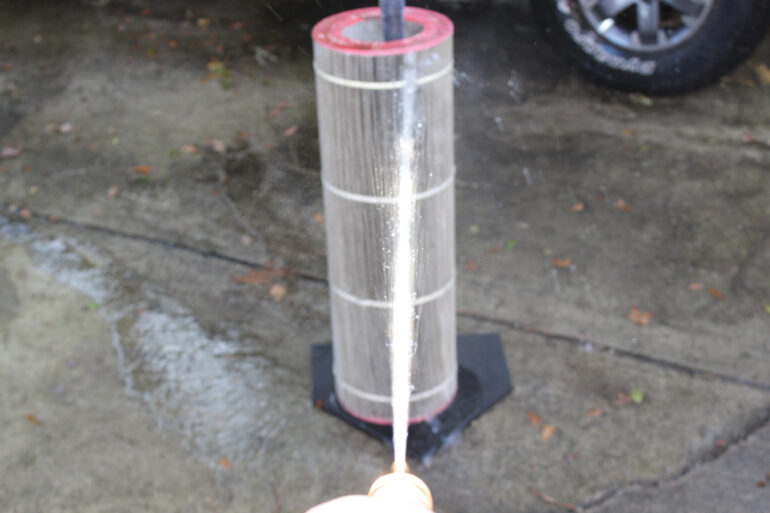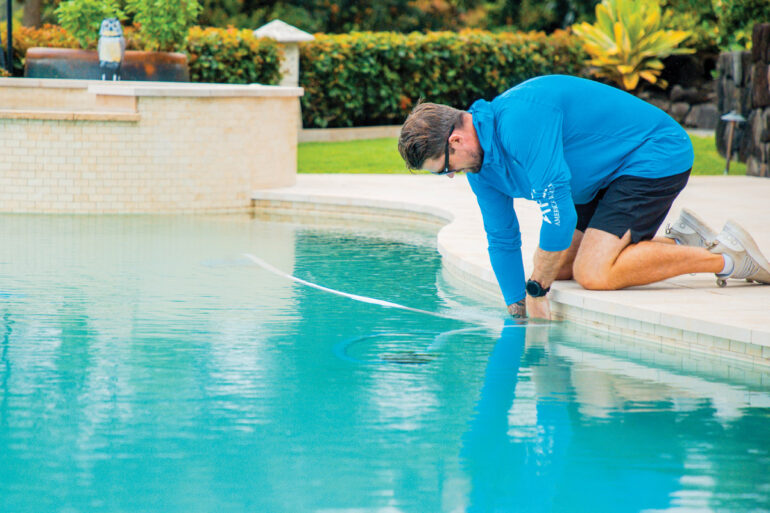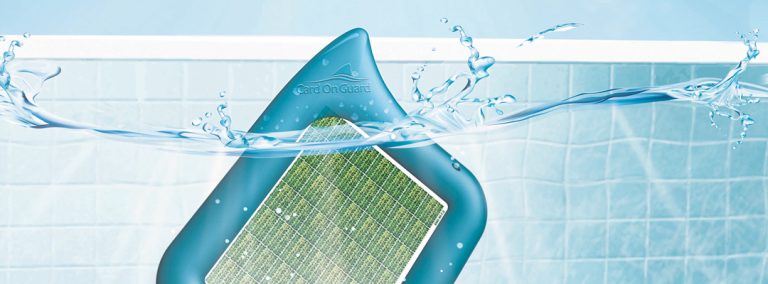Bothersome Bugs

How can a small insect wreak so much havoc on swimming pools? For two years, I have been explaining to customers why their pools are turning green and their patios are turning black: The whitefly infestation is taking Florida by storm. After about two months, I gave up and called around for help. I couldn’t understand how I could pour jug after jug of chlorine every day and still have a green pool. After calling a close friend from Texas, he laughed and told me look up in the trees — then call him back. He was right. The palm trees were black, with the bottom of each palm branch covered with white circles. The whitefly is sucking the sap out of the palm trees and excreting a sugary substance all over pool decks and in pools.
In layman’s terms, the swimming pools are filled with sugar and the only way to get rid of it is with an enzyme remover. Unfortunately, this means figuring out how to tell a customer they have an expensive rebalance on their hands. I tried several enzyme removers and found Orenda has what appears to be the most powerful enzyme remover. They sent out a local sales rep, who worked with me on a really bad pool. In four days, the pool was back to normal. The homeowners were in disbelief: After being green for six weeks, the pool was blue again.
I soon realized the problem didn’t stop there: The homeowner has to treat the palm trees to kill the fly, and the pool decks need to be power-washed. One of the most important things I learned was that the trees should be injected — not sprayed — with pesticide. The overspray is falling down into swimming pools, and no one should be swimming in pesticides. Also, the power-washing companies go crazy, and where do you think all the sugary sap from the pool decks go? Right back into the pool. Now you have to do another enzyme treatment, costing the homeowner more money.
Needless to say, it’s important to have a system in place to fix the whitefly problem. I sat down and developed a plan I could use to treat every whitefly impacted pool.
The homeowner has to accept and work with you, or you’re just wasting your time and their money. After I implemented this system, my customers started calling their friends and family, telling them what we were doing. My phone started ringing off the hook.
There are several myths about whitefly pools. Some people say the whitefly does not affect saltwater pools. This is false, but they will last a little longer before losing control to the sugar sap that sucks the life out of the pool. Another myth is that whiteflies do not affect filter cartridges. Once the sugar is removed from the pool with an enzyme remover, a new cartridge is usually needed. Some homeowners think the whitefly can ruin pool finishes and tile. This is also false — however, they will destroy patio furniture, fences and permanently stain pool decks.
A year ago, the whitefly was taking over South Florida and since has moved as far north as Melbourne (on the east coast) and Sarasota (on the west coast), and I feel they are here to stay. This past September, I received a call from a Sarasota company that could not figure out why they had so many green pools. The common denominator? The tops of the pools were covered with tiny white insects. I chuckled and said, “Go to one of your problem pools, look up and then call me back.” The supervisor went straight to a green pool and called me: The palm trees are black, she said, and the bottom of each branch is covered with white circles. Beneath the palm trees, the pool deck is black and sticky.
At the end of the day, an educated customer is your best customer. All these years I have felt that anything related to the pool is my problem, not the homeowner’s. But the whitefly changes that. Now the homeowner and pool company must work together in order to have a positive outcome.






